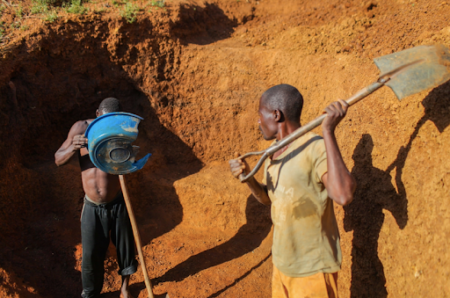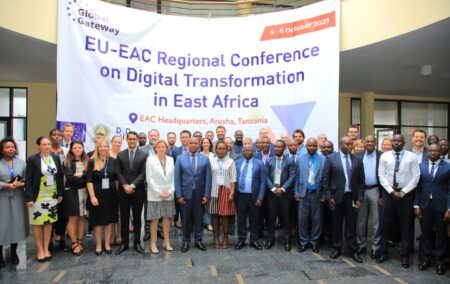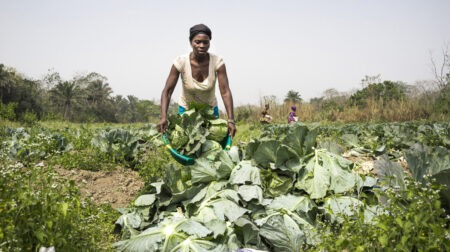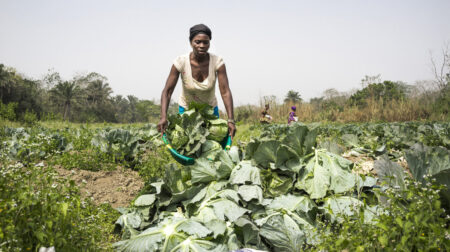Tanzania is one of the fastest-growing economies in Africa, as credited by Africa Development Bank (AfDB). However, still most of its population lives in poverty.
This is according to World Poverty Clock, approximately 23 million people dwell in poverty in Tanzania.
Nonetheless, Tanzania has been taking poverty elimination serious over the past decade. Hence, according to the recent world bank open data, shows that, Tanzania has made concrete steps within the span of 15 years (2000 to 2015) in eliminating poverty.
Moreover, Tanzania has sustained a rather significant economical stride over the past years, its economy growing on 6 to 7 per cent a year . However, World Bank data indicated Tanzania, had 49 per cent of population living below $1.90 per day in 2011, compared to 55.1 in 2007.
On the other side of the mark, Tanzania’s Household Budget Survey (HBS)report (2018), paints a rather promising narrative, from 2007 to 2018 particularly on poverty trends in Tanzania.
Whereby, basic needs poverty decreased from 28.2 in 2011-2012 to 26.4 in 2017-2018. Additionally, food poverty shrank to 8.0 per cent in 2017-2018 from 9.7 per cent in 2011-2012.
In all that context, crucial aspects can be fetched on how poverty is translated in Tanzania and how these numbers could aid Tanzania’s struggle for poverty elimination and guide the government and other actors to emerge with effective measures to lift up, millions dwelling on less than $1.90 per cent.
What World Bank data say
Per world bank report, more than half of the world’s poor live in sub-Saharan Africa. Despite this, still, Tanzania managed to pull 3.2 per cent as the cut of extreme poverty within periods of 2000 to 2015, and taking a lead in the regions.
By this measure, Tanzania reduced extreme poverty the fastest in Sub-Saharan Africa. It reduced extreme poverty from 86 per cent in 2000 to 49 per cent in 2011
Per the report, this means—Tanzania managed to reduce poverty about three times the pace of the average country in the region. Chad and the Republic of Congo ranked second and third and lowered their poverty rates by 3.1 and 2.7 percentage points per year respectively during this period.
Further, the report shows, poverty to be concentrated in just 10 countries, Nigeria, D.R. Congo, Ethiopia, Tanzania, Kenya, Madagascar, Kenya, Mozambique, Uganda, and Malawi, still these countries managed to pull up to 13 million people out of poverty in the respective period.
The report was based on Multidimensional Poverty Measure (MPM) which counts: share of primary-school-age children in school and share of population with access to electricity.
It goes without saying that, also, monetary poverty in Sub-Saharan Africa is based on household consumption, which signifies one of many aspects of economic well-being.
READ: International charity day and its role against poverty
Tanzania’s household budget survey
As seen in the World Bank report, Tanzania has contributed its fair share of the non-monetary measure of well-being. However, distribution of poverty in Tanzania has seen a slight shift, that begs for more development.
Per the 2018 HBS report, 81 per cent of poor people resides in rural areas, 16 per cent in other urban areas and 3 per cent in Tanzania’s commercial pulse-Dar es Salaam. Contrary to 2011-2012 HBS, where – 84.1 per cent of poor people dwelled in rural areas, urban areas have hosted more poor people now as 14.4 per cent was the rate in 2011-2012, while Dar es Salaam had only 14.4 per cent.
It is per report that: the proportion of the population living in poverty was reduced, also the depth and severity of poverty were both reduced respectively. From 2007 to 2018, the depth of poverty (or poverty gap) decreased from 10 to 6 percent and the severity of poverty was more than halved, from 5 to 2 percent.
However, in the respective arguments, Tanzania has not only made considerable efforts to downplay extreme poverty but also placed itself in a greater position to extend the efforts further, this is due to the fast population growth, that demands dynamic and robust approach.
Tanzania had about 34 million people in 2000, over 53 million in 2015 and at present Tanzania has over more than 57 million people- whereby, almost 78 per cent of its population is under 35 years old.
Further, according to African Institute for Development Policy, other parameters such as youth dependency rate—standing at 79.5 per cent on the supporting population in Tanzania, which significantly higher than the elderly population at 5.5 per cent, ought to considered attentively.
And yet, youth unemployment is at 13.7 per cent, 3 points higher than the total unemployment in Tanzania. At present, the agriculture sector is holding more youth as labor force (75 per cent) and the formal sector accommodating on 6 per cent.
With the numbers in hand, Tanzania ought to improve its efforts in enhancing its human capital, levitate supporting infrastructures and income-generating apparatus, such as agriculture, distribution, and markets, that holds more labor force and contribute significantly to the Gross Domestic Product of the country.
Comprehensive strategies in Tanzania such as: National Strategy for Growth and Poverty Reduction (NSGPR), ought be updated to suit the current economical gaps and socio-political aspects, that contribute to poverty elimination in Tanzania.
Moreover, Tanzania population projects per National Bureau of Statistics show by 2035 Tanzania will have more than 89 million people. This calls for a more sustainable poverty alleviation strategy, that goes further to stimulate economic veins of rural communities, promote production and responsible consumption, increase value addition to agro-products to diversify the economy.
READ: How Africa can create jobs, conquer poverty










